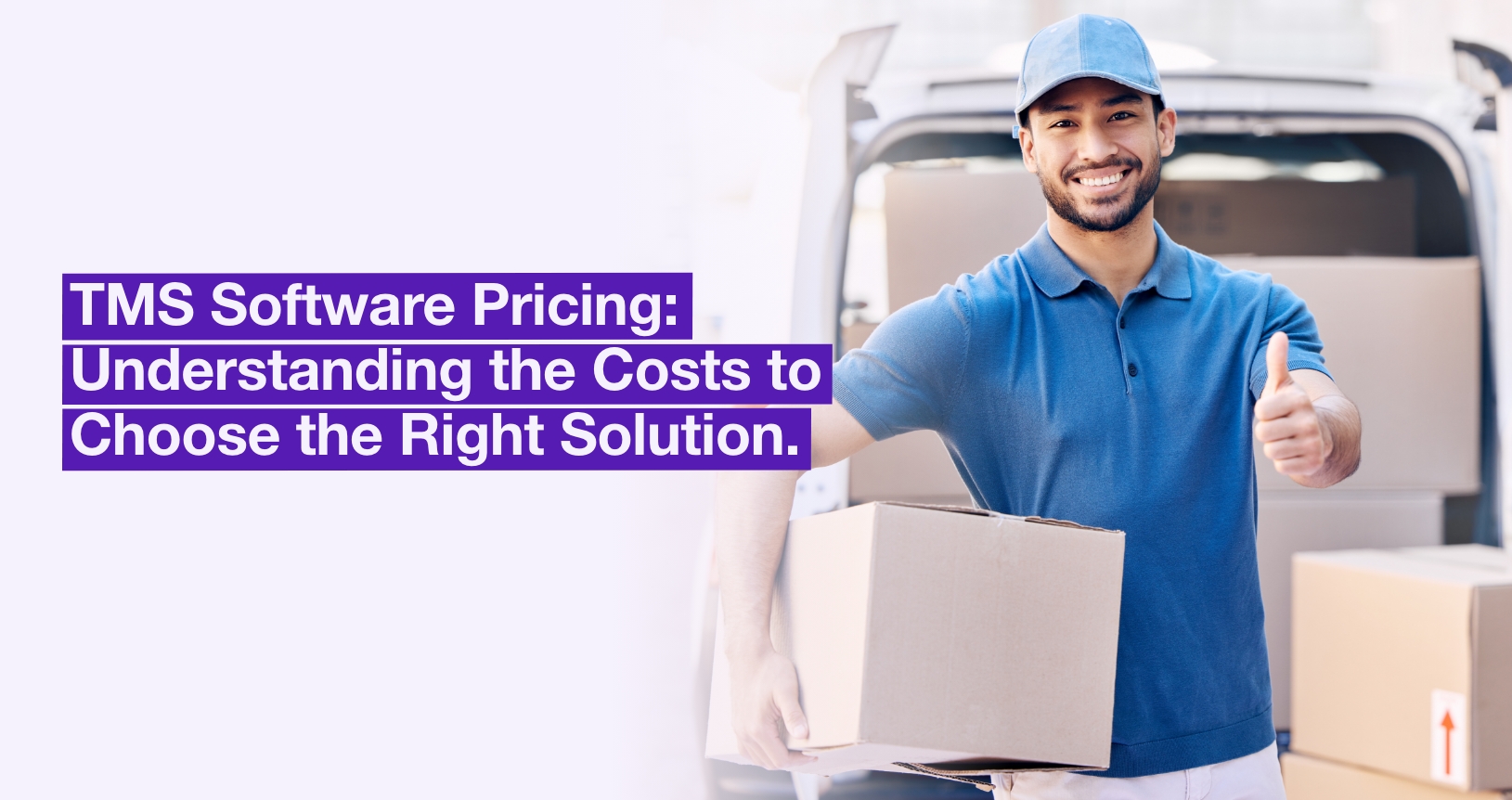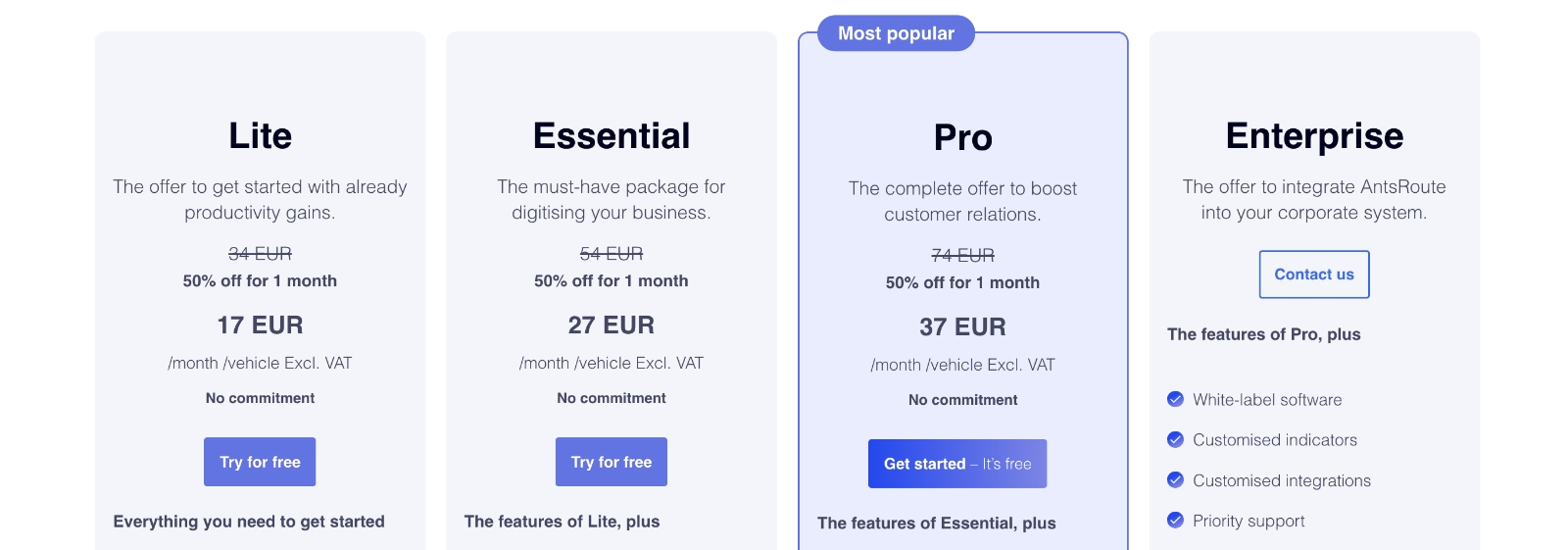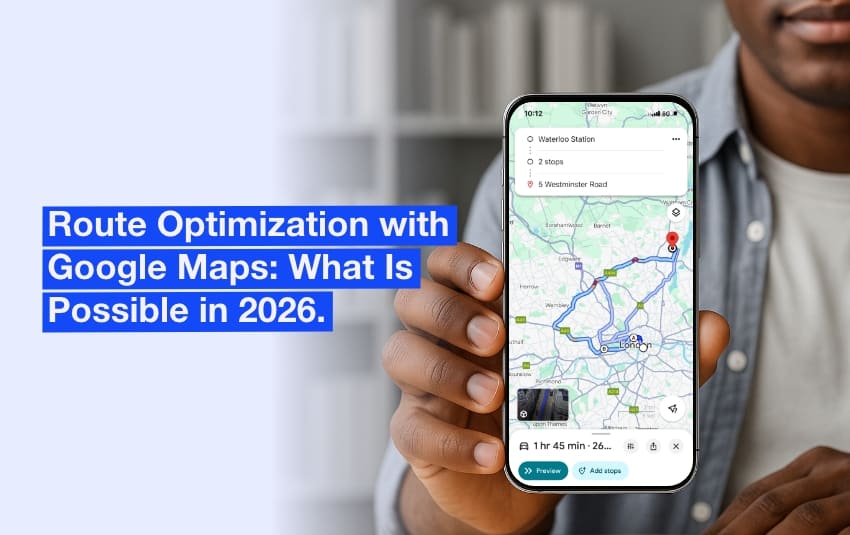TMS Software Pricing: Understanding Costs to Help you Choose the Right Solution
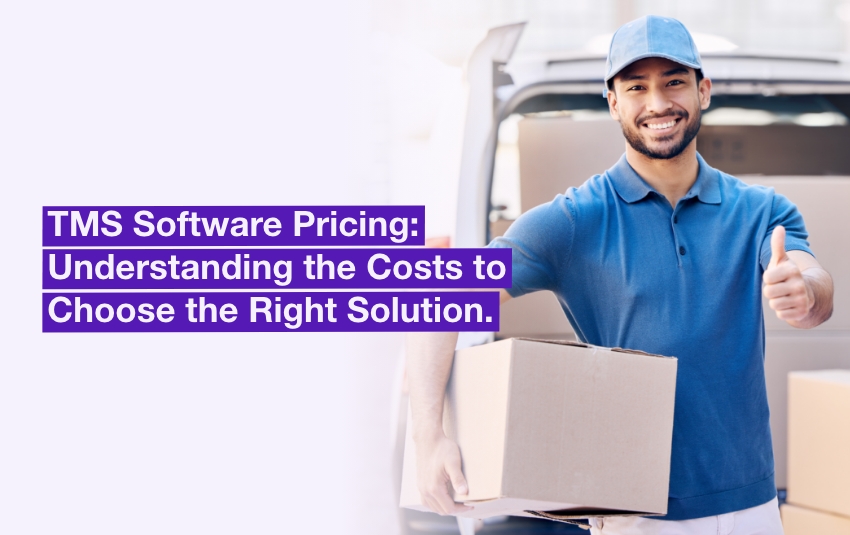
Choosing Transport Management Software, or TMS, is a strategic decision for any company. The benefits are numerous: optimised costs, improved logistics performance and greater customer satisfaction. However, one question often arises: how much does a TMS cost?
Between the different pricing models, direct and indirect costs, and the return on investment to be anticipated, the choice can seem complex. This article helps you to understand the key elements that influence the price of a TMS and to identify the most appropriate solution. Among them, AntsRoute, our software designed for SMEs, stands out for its excellent value for money.
Table of contents:
- The TMS: A catalyst for logistics performance
- Factors influencing the price of a TMS
- The real cost of a TMS
- What return on investment (ROI) can you expect?
- Comparative table of the main TMS software
- How do you choose the right TMS software for your business?
The TMS: A catalyst for logistics performance
What is TMS software?
The TMS is much more than a simple administrative tool: it is a means of managing flows, planning routes and controlling costs. However, this limited vision overlooks its true potential: that of accelerating overall performance. For example, Help Air à Domicile recorded a 15-30% increase in productivity after integrating our TMS.
The main functions of a TMS
A high-performance TMS, like AntsRoute, includes essential functions to optimise your operations:
- Planning and tracking: real-time tracking of trucks and goods, route optimisation and proactive management of delays.
- Cost and billing management: Automation of processes (billing, cost calculation, pre-billing) and real-time visualisation of margins
- Performance analysis: Customised dashboards, predictive analysis of trends and detailed reports.
- Advanced functionalities: Paperless document management, collaborative portals and integration with third-party tools.
Did you know? Companies using a TMS save up to 5% on their transport costs thanks to better management of routes and fill rate of trucks.

The 4 main functions of a TMS.
Turning your constraints into a competitive advantage
By adopting a TMS, you can:
- Reduce logistics costs: optimise routes, reduce unnecessary kilometres, save up to €20 per route and make better use of the fleet.
- Improve customer service: offer real-time visibility of orders, communicate proactively on contingencies and boost customer satisfaction.
- Save time and boost productivity: automate repetitive tasks and free up teams for higher added-value tasks.
- Optimise resources: analyse data to identify trends, improve vehicle use and adjust services based on customer feedback.
- Innovate for a sustainable and flexible future: reduce your carbon footprint by planning eco-friendly itineraries.

By adopting a TMS, you can turn your constraints into a competitive advantage.
Factors influencing the price of a TMS
The cost of transport management software varies according to a number of criteria. Understanding these factors will help you choose a solution that suits your needs and budget.
Pricing models: SaaS or licence?
Are you considering investing in a TMS to optimise your operations? You have two main options: the SaaS (Software as a Service) or software licensing model.
Here’s a quick comparison:
| Criteria | TMS SaaS Models | TMS Licensing Models |
| Initial cost | Low: Subscriptions from a few hundred euros per month. | High: The initial investment is significant (up to several tens of thousands of euros). |
| Recurring costs | Monthly/annual subscription (including updates). | Low cost, but includes maintenance and updates (optional). |
| Deployment | Fast: a few days or weeks. | Slow: several months. |
| Accessibility | Available everywhere. | Limited to in-house infrastructure. |
| Scalability | Highly flexible: Quick adjustment. | Limited: Technical updates required to integrate new functions. |
| Data management | Hosted by the SaaS provider (cloud). | Stored locally (total control). |
TMS SaaS Models
✅ Advantages:
- Low initial cost (monthly or annual subscription, from €34/month per vehicle at AntsRoute).
- Accessible from any connected device.
- Maintenance included (updates, security and support).
❌ Disadvantages :
- Dependence on supplier for hosting and data security.
- Recurring costs depending on the number of users and modules added.
TMS Licensing Models
✅ Advantages:
- Total control over data and infrastructure.
- Long-term profitability after initial amortisation.
❌ Disadvantages :
- High initial investment.
- Maintenance managed in-house (need for a dedicated IT team).
To sum up, if you are looking for an affordable solution with a low initial cost, SaaS is ideal. On the other hand, a licensing model may be more cost-effective in the long term if your budget allows for a substantial initial investment.

TMS SaaS Model vs. TMS Licensing Model.
Size of the company
- Small businesses: Simple TMS with basic functions such as route planning or delivery tracking.
- SMEs: Advanced functionalities such as integration with ERP systems or analysis modules.
- Large companies: Complex systems with high-volume management and advanced customisation.
For a SaaS model, the price is often based on the number of vehicles or users. The more these figures increase, the higher the total cost becomes.
Other factors affecting price
Specific needs
- Simple: Basic modules that keep costs down.
- Advanced: More advanced functionalities, such as artificial intelligence, increase the budget.
For example: an SME in the food sector may be satisfied with basic functions, while a multinational logistics company could invest in predictive tools to manage seasonality.
Complexity of integration
- Basic integration: A stand-alone TMS or one with limited connections is more affordable.
- Advanced integration: Connecting to systems such as ERP, WMS or specific tools (CRM, telematics) requires customisation, testing and training, which increases the cost.
Scalability
A scalable TMS, capable of adapting to the growth of your business, can involve additional costs.
Team training
Training generally accounts for 10-20% of the total cost of a TMS. Larger companies or those with complex processes often need to invest more in training their teams, including on-site and remote sessions, as well as customised teaching materials.
Tip: Opt for a supplier offering integrated training or online tutorials to limit these costs. AntsRoute is the perfect partner!

Many factors influence the price of a TMS.
The real cost of a TMS
When a company invests in a TMS, it is important to consider not only the direct costs associated with its acquisition and use, but also the indirect and hidden costs, which can have an impact on the company’s overall efficiency.
Direct costs
Direct costs include all clearly identifiable expenses relating to the purchase, installation and use of the TMS. These costs vary according to the model chosen (SaaS or licence) and the company’s specific needs.
Licensing Model: Investment of between €10,000 and €300,000 depending on complexity and size.
SaaS Model: Estimated monthly costs by company size:
- Small businesses: Basic functions (route management, route optimisation, real-time tracking).
Monthly rates: Between €30 and €50 per vehicle or user. A company with 5 vehicles will pay between €150 and €250 per month, or €1,800 to €3,000 per year. With AntsRoute, the same company will pay around €185 a month, or €2,220 a year. - SME: Advanced features such as ERP integration, KPI management and analytical reports.
Monthly rates: Between €40 and €80 per vehicle or user. An SME with 20 vehicles will pay between €800 and €1600 per month, or €9600 to €19,200 per year. - Large companies: Customised modules, AI, management of large volumes of data, multi-system integration (ERP, WMS).
Monthly rates: Between €70 and €150 per vehicle or user. A large company with 100 vehicles will pay between €7,000 and €15,000 per month, or €70,000 to €180,000 per year.

The cost of a TMS SaaS Model vs. a TMS Licensing Model.
Other direct costs for a SaaS TMS:
- Add-on modules: Between €100 and €1,000 per month.
- Volume-based rates: Costs increase according to the number of orders or kilometres optimised.
Tip: Annual subscriptions generally offer a 10-20% reduction compared with monthly payments.
Summary of direct costs:
| Item | SaaS Model | Licensing Model |
| Acquisition cost | Low (monthly/annual subscription) | High (one-off payment) |
| Deployment | 10-20% of total cost | 10-20% of total cost |
| Training | Included or extra charge | Included or extra charge |
| Hosting | Included in the subscription. | Internal or third-party servers required. |
| Maintenance and support | Included in the subscription. | Annual contract (approximately 15-20% of the initial cost) |
| Add-on modules | Extra charge | Extra charge |
Indirect costs are linked to the organisational impact of the TMS and the resources required to ensure that it is implemented and used effectively.
1. Implementation
- Analysis of needs: Identifying existing processes and the functionalities required requires in-house resources.
- Transfer of data: Transferring data (customers, orders, routes) requires time, dedicated skills and sometimes external tools.
- Learning period: Teams may experience a drop in productivity as they familiarise themselves with the new system.
2. Continuing training
- Initial training: Often included, this requires resources to teach teams how to use the system.
- Continuing training: Additional training may be required for new employees or for the use of new functions.
3. Reorganisation of teams
The introduction of TMS may require teams to be reorganised or roles to be adjusted, which may entail recruitment or team readaptation costs.
4. Managing the contingency
- Breakdowns or interruptions: Technical problems (server breakdowns, bugs) can lead to delays and additional costs.
- Change of SaaS provider: If the TMS no longer meets the company’s needs, a change of software involves termination and migration costs.
5. Maintenance and updates
After implementation, the TMS requires regular updates and maintenance. These costs may include:
- Software updates: Some are included, but others may be chargeable.
- Technical assistance: Additional charges for ongoing support may apply, depending on the contract chosen.
Tip: To avoid unpleasant surprises, ask the supplier for a detailed quote, including the costs of implementation, integration and any customisation.
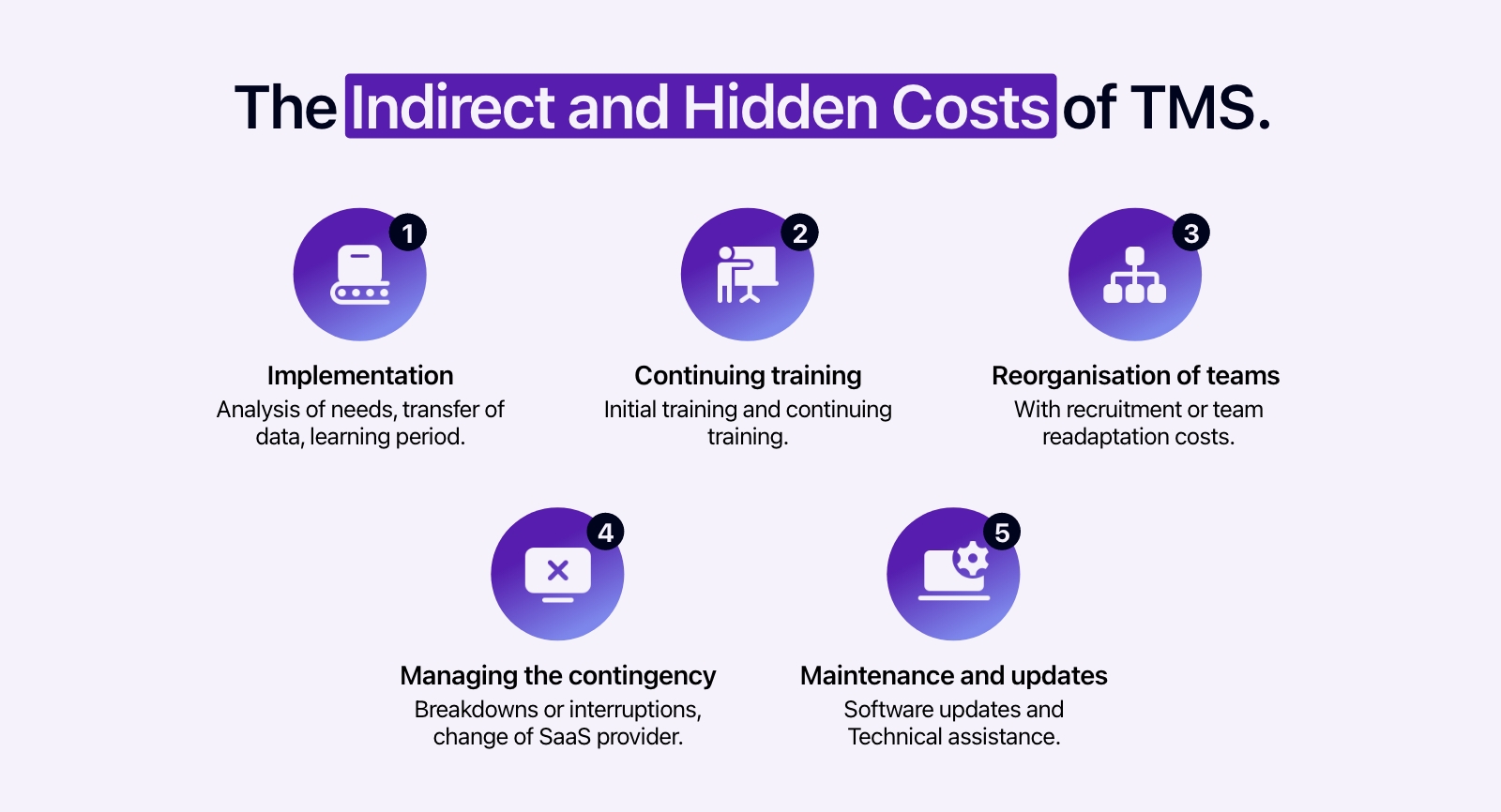
The 5 main indirect costs of a TMS.
With AntsRoute: guarantees to avoid unpleasant surprises
AntsRoute stands out for its transparent management with no hidden costs:
- Detailed quotation: Each customer receives a precise cost estimate, including installation, training and use.
- Modules included: Unlike other solutions, AntsRoute’s basic price includes essential functionalities (route optimisation, real-time tracking, notification management).
- Transparency on advanced options: Premium features (specific integration, API, customised reports) are offered at clear prices before activation.
- No unexpected volume-related costs: AntsRoute does not charge according to the number of orders or data, guaranteeing stable costs.
- Support included: Initial training is included in all packages, so you can get to grips with the software effectively at no extra cost.
- Comprehensive documentation: Accessible guides and documentation reduce the need for paid training.
What return on investment (ROI) can you expect?
Adopting a TMS can generate significant ROI thanks to measurable benefits in a number of areas. Here are the main benefits and indicators to monitor in order to assess its impact:
Reducing operating costs
- Route optimisation: 20% to 30% reduction in distances travelled, reducing fuel costs.
- Improved vehicle fill rate: Optimum management of vehicle capacity, limiting empty journeys.
- Reduced waiting times: Improved coordination with carriers and delivery points, as demonstrated by Licorne Express, which has saved up to 50% on its operations.
Productivity gains
- Task automation: frees up time for higher added-value activities. GHEMM has reduced the time taken to plan routes from 60 minutes to 10 minutes, increasing its productivity by a factor of 6.
- Reduced errors: Automation reduces disputes and missed deliveries.
- Accelerated training: Margain Marée has cut driver training time in half, from one week to 2 or 3 days.
Improving customer satisfaction
- Reduction in customer calls: Margain Marée has seen a 50% reduction in calls thanks to real-time tracking of deliveries.
- Fewer delivery errors: Better planning and digital proof of delivery boost customer satisfaction.

The ROI of a TMS.
How do you calculate ROI?
To estimate the ROI of a TMS, you can use this simple formula:
ROI (%) = [(Benefits generated – Costs invested) / Costs invested] x 100
- Benefits generated: Total of savings made (fuel, time, labour) and financial gains linked to improved sales or satisfaction.
- Costs invested: TMS purchase or subscription price, implementation, training and maintenance.
Here’s a concrete example:
- Estimated annual savings: €50,000 (fuel, labour, customer satisfaction).
- Annual cost of TMS: €12,000 (subscription + training).
- ROI : [(50 000 – 12 000)/12 000] x 100 = 316%.
The ROI of a TMS can be achieved in a few months to a year, depending on the size of the company and the complexity of the logistics flows.
Comparative table of the main TMS software
| Software name | Pricing | Main functions | Target audience | Highlights |
| AntsRoute | SaaS – €34/month/user | Route optimisation, proof of delivery, live tracking, advanced statistics | SME, Mid-sized company | Intuitive interface, 5/5 support, fast ROI |
| Dashdoc | SaaS – On request | ERP integration, real-time monitoring | Large companies | ERP connectivity |
| Shiptify | SaaS – On request | Carrier cooperation, traceability | SME and large companies | Easy to use interface |
| Nomadia | SaaS – €28/month/user | Global planning | Large companies | Advanced modules |
How do you choose the right TMS software for your business?
Ask yourself the right questions
Before comparing solutions, take the time to define your needs by answering the following questions:
- What are your specific needs? Real-time monitoring, optimisation, dematerialisation, analysis, etc.
- What do your customers expect? Real-time visibility, flexible delivery options, etc.
- What is the size and complexity of your fleet? Number of vehicles, types of journeys, frequency of deliveries, etc.
- What is your budget and what ROI do you expect? Identify potential savings and expected productivity gains.
- Does your TMS need to be integrated with your existing systems? Check compatibility with your ERP, CRM or other tools.
Test before you invest: the importance of free trials
Choosing a TMS can be stressful, especially when the investment is significant. Many publishers, such as AntsRoute, offer free trial periods. Take advantage of this to:
- Test key functionalities in real-life conditions.
- Analyse the software’s ergonomics and efficiency.
- Validate the fit with your existing processes.
However, there are limits: a poorly prepared trial phase can mobilise resources (integration, training) without guaranteeing convincing results. So it’s important to define clear objectives from the outset.
Trends to watch out for in 2025
The TMS sector is evolving rapidly to meet market demands. Here are the main trends:
- Artificial intelligence and machine learning: for even more accurate forecasts and dynamic optimisation.
- IoT integration: Connected sensors for detailed tracking of goods.
- Collaborative TMS: Enhanced data exchange between partners for more agile logistics.
- Sustainability: Tools for calculating carbon footprints and optimising routes to reduce emissions.
Ready to find out what a TMS can do for you? Request a demonstration today and find out how a TMS can help you.
Frequently Asked Questions
Yes, solutions like AntsRoute are designed for SMEs, with affordable costs and features tailored to their needs.
Some solutions offer free versions, but these are often limited in terms of functions. An interesting alternative for companies on a tight budget is to choose a modular TMS.
WRITTEN BY
Florine Martin
Florine has been a freelance web copywriter since 2021, writing for a variety of clients in a range of sectors. Since the beginning of 2024, she has been writing articles about logistics for our company, AntsRoute.
Free 7-day trial | No credit card required
Contenu
- The TMS: A catalyst for logistics performance
- What is TMS software?
- The main functions of a TMS
- Turning your constraints into a competitive advantage
- Factors influencing the price of a TMS
- Pricing models: SaaS or licence?
- TMS SaaS Models
- TMS Licensing Models
- Size of the company
- Other factors affecting price
- Specific needs
- Complexity of integration
- Scalability
- Team training
- The real cost of a TMS
- Direct costs
- 5 Indirect and hidden costs
- 1. Implementation
- 2. Continuing training
- 3. Reorganisation of teams
- 4. Managing the contingency
- 5. Maintenance and updates
- With AntsRoute: guarantees to avoid unpleasant surprises
- What return on investment (ROI) can you expect?
- Reducing operating costs
- Productivity gains
- Improving customer satisfaction
- How do you calculate ROI?
- Comparative table of the main TMS software
- How do you choose the right TMS software for your business?
- Ask yourself the right questions
- Test before you invest: the importance of free trials
- Trends to watch out for in 2025
- Frequently Asked Questions


